I quit being a procrastinator
Procrastination has been a constant buddy of mine. I have goals in life, but part of my brain prefer to default to the easiest mode of survival during non-working hours.
"You do not rise to the level of your goals. You fall to the level of your systems.” — James Clear
The recency of the volatility of tech jobs and the advent of AI has me constantly wondering if I will still stay relevant as a tech knowledge worker in 5 years time. Even though I’m going to be graduating with an ICT degree this year, I still can’t help but feel the imposter syndrome. Every time I research on my work-related task, I learn something new. One day, it could be building ontology, the next could be an open source platform that could boost our productivity.
The constant discovery makes me feel like I’m constantly being left behind. I need a system to be able to improve my value as a tech knowledge worker.
The past few months, I have been looking for productivity systems that I could adopt. When left on my own device, I’m not the most discipline person. But put me in a well-designed system and watch me function like a clockwork.
Elements of my system
- Daily journaling in Bullet Journal style
- Tracking of desirable daily habits
- Energy monitoring
- Organising notes in PARA (Projects, Area, Resources and Archive) buckets
- My concrete life manifesto
- Tracking of targets on the project page
- GROW system for my learning plan
- Adopting note taking in Zettelkasten format
- Kept the same fleeting, literature and permanent labels
- However, I adopt the note-taking in a slightly different format
90% of my system exist in one app, Notion. I love the flexibility of being able to create any kind of database and linking of notes and pages across database. A productive system can be simple or as complex as one will like it to be.
Bullet journal
We forget things. And our memory can betray us. Journalling is the most optimal way to record our reality with the least distortion. I journal about events, interactions with people, ideas, any pending tasks and reflection. By journalling, I’m priming my brain to be actively fishing and capturing ideas. I’m also making sure that I’m don’t lose ideas that might be of interest to me. By carving out time to reflect on daily, weekly and monthly, I am getting prompt feedback on whether I’m doing the actions that are necessary for achieving my goals.
Besides that, I also utilise my daily journal to track desirable habits and my energy level. With the daily logs, I could also monitor my weekly and monthly stats on my consistency. There is just something so satisfying about seeing a streak of checkbox and reaching my habits week by week. There is no major achievement here, but still, it is like completing a small side quest in a game.
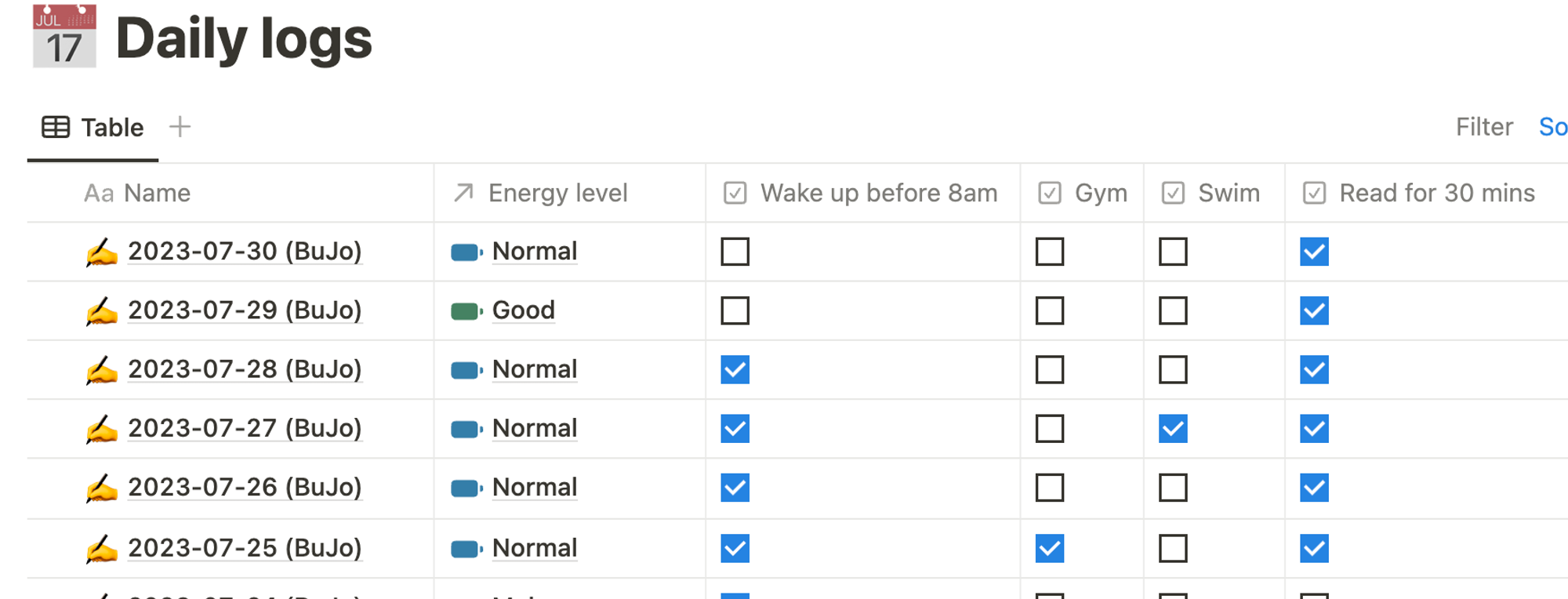
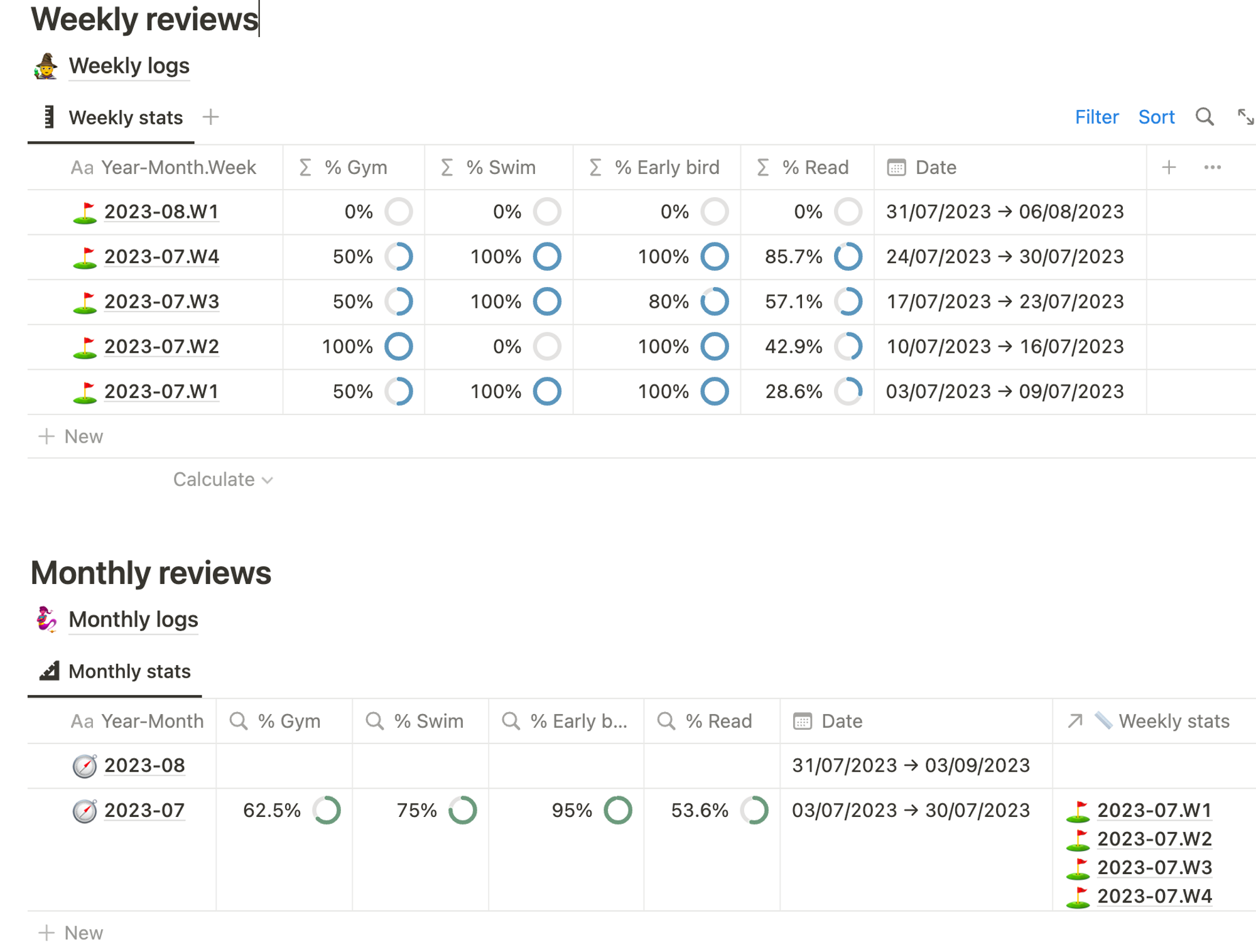
Note taking
In some sense, bullet journal is a form of note-taking, but I will say it is more of note-taking for things that happen in my life. The zettelkasten and second brain method are more of a note-taking system for discoverability, actionability and associations. The ideas that appear on my bullet will ultimately be transferred to my zettelkasten and second brain system.
I don’t restrict myself to a single idea in a note in the zettelkasten method. I’ll try to associate the notes whenever possible. Zettelkasten do not specifically group the notes in specific buckets, at least not initially. Personally, I will group the notes according to my PARA system, which I can take further streamline the notes on my PARA specific pages. Having my PARA clearly defined also help me to better utilise my time to look for information that is of interest to me. The downside to this, is that I might be limiting the scope that I could generate ideas from.
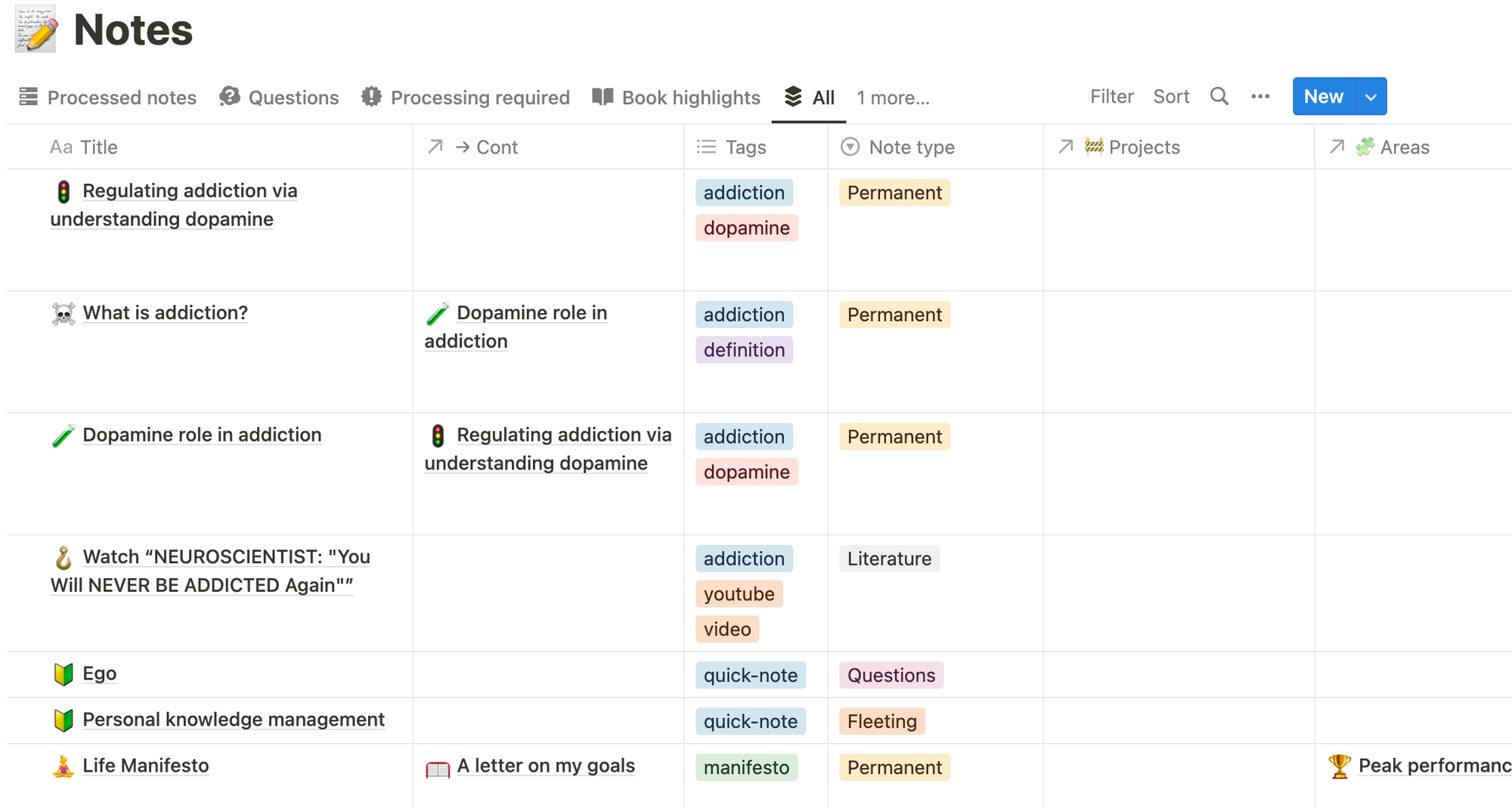
A project has a clear beginning and an end. This means, it usually comes with a deadline. In order to keep everything in a centralised place, my notion has a task list as well. Just like any other project management tool, each task has a name, estimated timeline, status and priority.
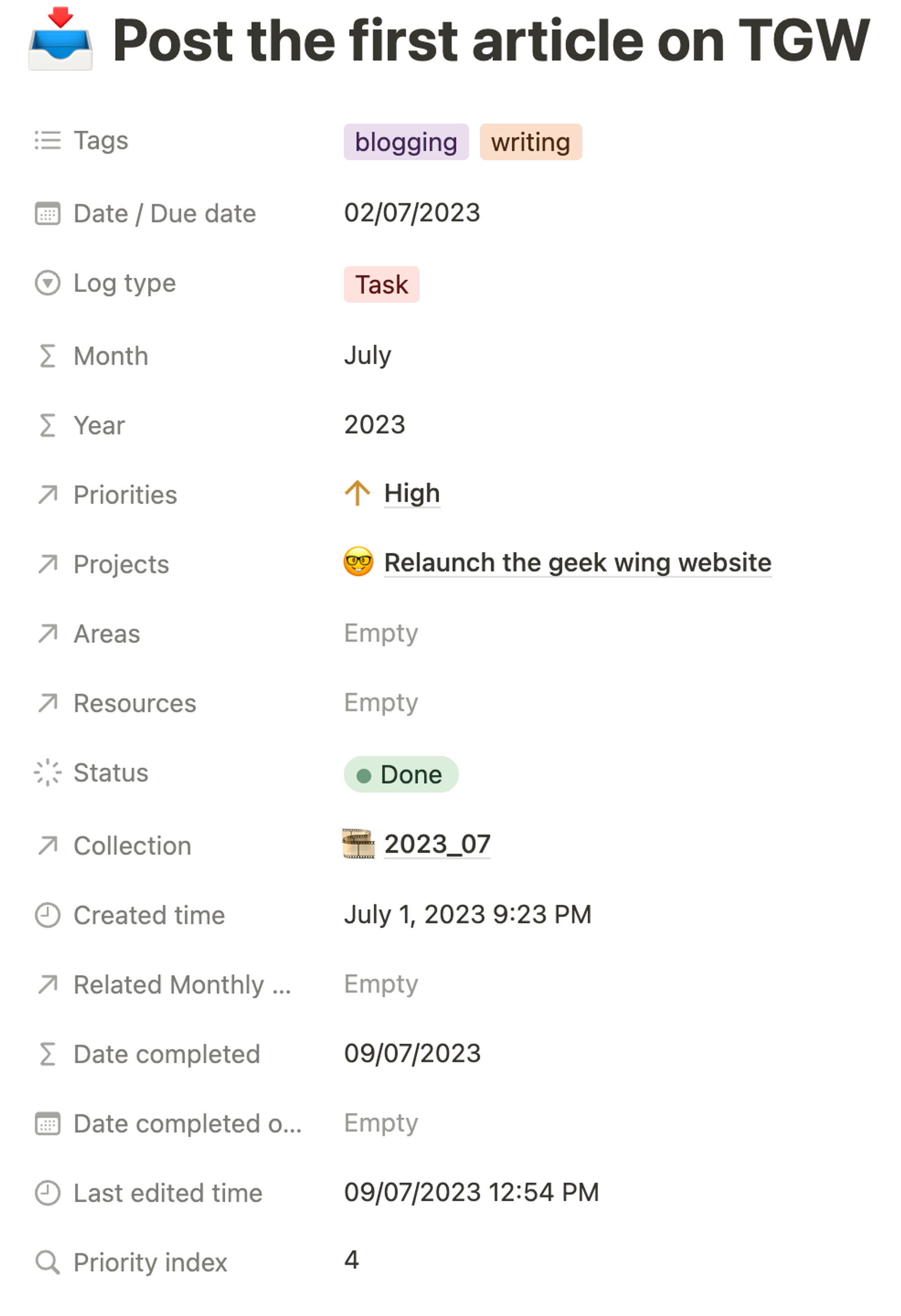
Creating a task is pretty straightforward in Notion. However, if you have used any professional task tracking tool, you will soon realise that Notion falls flat on automation.
In the book, Second Brain, Tiago Forte talks about creating intermediate packets that could be reused and various project checklist. It reduces friction to work on something and free up the brain to do high value task instead of repeatedly working on similar tasks.
For my current projects bucket, I’m mainly utilising it to learn something new. Therefore, I created a workflow and checklist for my learning journey so that I can focus on the things that really method. This is then stored as a template that I can quickly pull up for other projects that revolve around learning.
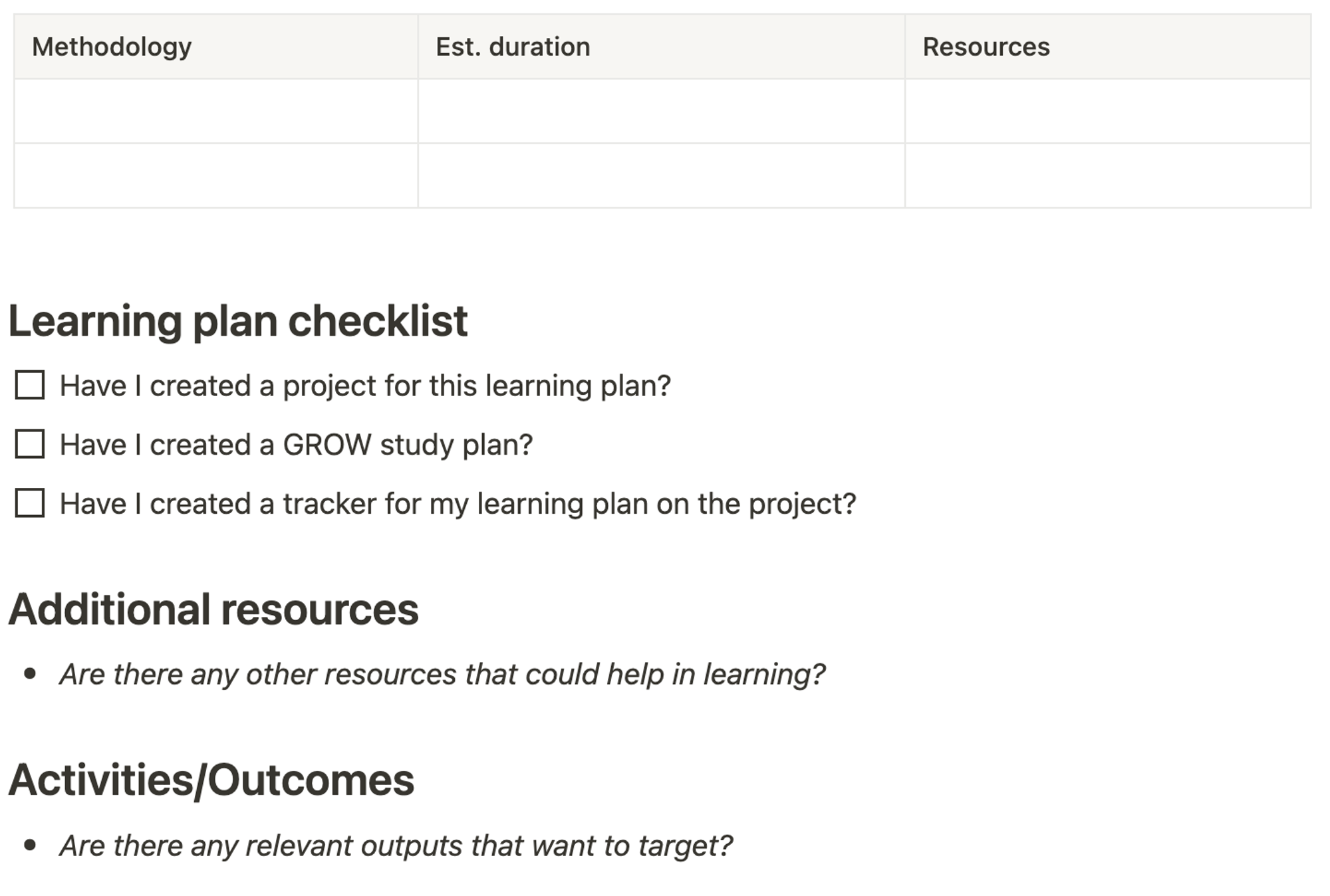
GROW system
In the above description about my system, I mention the GROW system. This is a system that I saw from the Cajun Koi Academy. It involves some elements of gamification to trick my brain to treat studying as a form of game. I have started to implement the system into my learning plan. But since my learning project has not started yet, so I haven’t personally experience the efficacy of learning with the GROW system.
That’s my productivity system. I’m not sure if I will continue tweaking the system. But for now, I find the productivity system more like a game of life. It makes being productivity during my leisure time fun and enjoyable.
